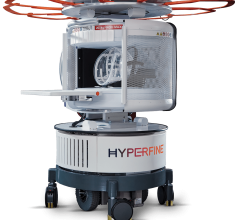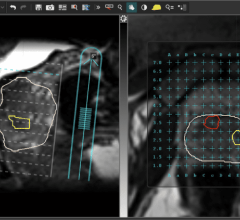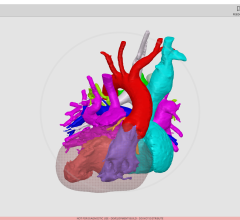
Molecular imaging of the GRPR biomarker on mice xenografted with PC3 and H441 cells by T1-weighted spin echo MR imaging and NIR imaging.
December 29, 2015 — A method to better trace changes in cancers and treatment of the prostate and lung without the limitations associated with radiation has been developed with a new magnetic resonance imaging (MRI) imaging agent (Scientific Reports. doi:10.1038/srep16214).
The researchers developed a new imaging agent they named ProCA1.GRPR, and demonstrated that it leads to strong tumor penetration and is capable of targeting the gastrin-releasing peptide receptor expressed on the surface of diseased cells, including prostate, cervical and lung cancer cells.
Molecular imaging of cancer predictors using MRI offers better and improved understanding of various cancers and drug activity during preclinical and clinical treatments. However, one of the major barriers in using MRI in evaluating specific disease predictors for diagnosis and monitoring drug effects is the lack of highly sensitive and specific imaging agents capable of showing the difference between normal tissue and tumors.
"ProCA1.GRPR has a strong clinical translation for human application and represents a major step forward in the quantitative imaging of disease biomarkers without the use of radiation," said lead author Jenny J. Yang, Ph.D., professor and associate director of the Center for Diagnostics and Therapeutics at Georgia State University in Atlanta. "This information is valuable for staging disease progression and monitoring treatment effects."
The researchers' results are an important advancement for molecular imaging. This agent has a unique ability to quantitatively detect expression level and spatial distribution of disease predictors without using radiation.
"Our discovery is of great interest to both chemists and clinicians for disease diagnosis, including noninvasive early detection of human diseases, cancer biology, molecular basis of human diseases, and translational research with preclinical and clinical applications," said coauthor Shenghui Xue, Ph.D., postdoctoral researcher in Georgia State Department of Chemistry.
Improved imaging agents such as ProCA1.GRPR have implications in understanding disease development and treatment.
For more information: www.nature.com/articles/srep16214


 July 25, 2024
July 25, 2024 








